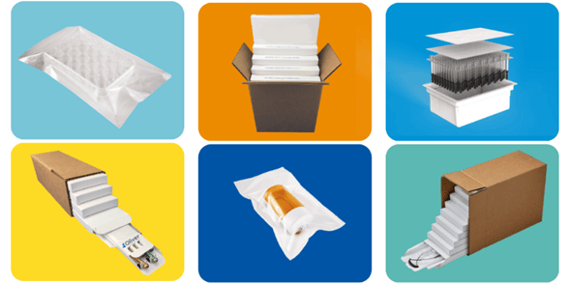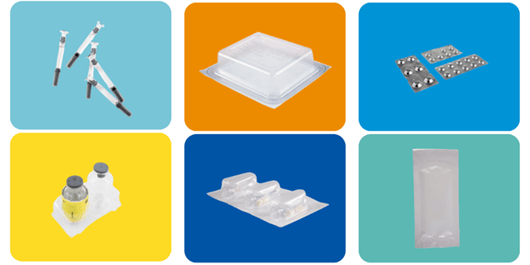What is Primary and Secondary Packaging?
You’ve finished the development of your device or medication. What’s next? The last step to ensuring the safety and integrity of your medical product is all in the packaging. There are two main types of packaging to think of when developing protective layers, primary and secondary packaging, and you’ll need both. Today, we’re going to discuss the critical differences between the two types of packaging, things to keep in mind when choosing your device package, and examples of what packaging solutions fall into these categories.
Primary Packaging
When beginning the process of choosing your primary packaging, consider the goal of the packaging. The primary packaging should protect the medical device or therapy, preserve it for future use, safely deliver it to the end user without contamination, and comply with industry regulations.
Primary packaging is the material that comes into direct contact with your medical device or medication.
When selecting a primary package solution, there are various factors to consider – product consistency, weight, sharp or rough edges, barrier requirements, and sterilization methods. All these components play a role in selecting the best packaging solution for your product. (Learn More: 5 Medical Packaging Considerations). Ultimately, your primary packaging should ensure a clean and straightforward presentation of a medical device or pharmaceutical product.
Pouch: Holds and protects medical devices for aseptic presentation.
Thermoform Tray and Die-Cut Lid: Holds, organizes, and covers devices that require ridged protection.
Blister pack: Individual pockets in a package, storing single-dose tablets for easy use.
Vial: Holding injectable medications for straightforward administration.
Prefilled syringe: Syringe of medication to ensure control of delivery.
Secondary Packaging
Now that you’ve chosen a primary package, you’ll need a second protective layer. This is where secondary packaging comes in. Secondary packaging is the protective outside layer that holds your primary package. Similar to the goals of primary packaging, the main purpose of secondary packaging is to protect your medication or device through shipping and handling. The difference between primary and secondary packaging is the proximity of the packaging to the product. Secondary packaging is not only a protective layer for the primary package and product, but it can efficiently ship and group together your product components.
For secondary packaging, the development of the package goes deeper than the average box that your Amazon order is delivered in. A packaging professional develops specific levels of layering based on the protection levels needed. While meeting regulations and passing transportation testing is the priority, there are many opportunities for efficiencies to be gained when developing a secondary package. These opportunities are often rooted in the design of your primary package, allowing the regulations for your product to be met, all while designing your packages to the smallest physical footprint possible, reducing carbon emissions and often lowering costs.
Secondary Packaging Examples:
SBS shelf carton: Solid bleached sulfate, providing a quality moisture barrier carrier, and is a good substrate for printing, allowing easy product identification on the shelf.
identification on the shelf.
Single-wall corrugated carton: Provides a single inner and outer layer of liner that surrounds a single flute layer, a waved-shaped structure in the center of your package that strengthens and insulates the carton.
Double-wall corrugated carton: A double liner for the outside layer and two layers of fluted paper between the outside layers.
Pouch: A pouch can also be used as a secondary package, holding primary packages such as blister packs.
Tray: A tray can also be used as a secondary package, housing primary packages such as prefilled syringes.
Conclusion
In the medical packaging field, we know the importance of packaging, both secondary and primary. From protection to preservation, packaging plays a critical part in the delivery and administration of the product. Even though packaging isn’t always the first thing one thinks of when developing a product, both types of packaging are equally crucial in delivering a safe and effective product to the end user.
Check out Oliver’s secondary and primary packing solutions in the product guide here.



.webp)
